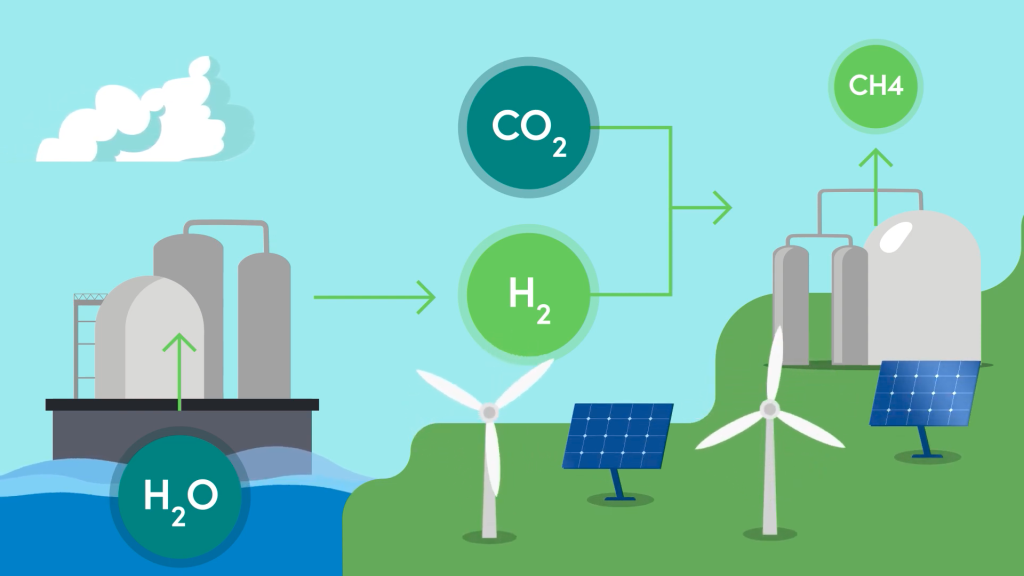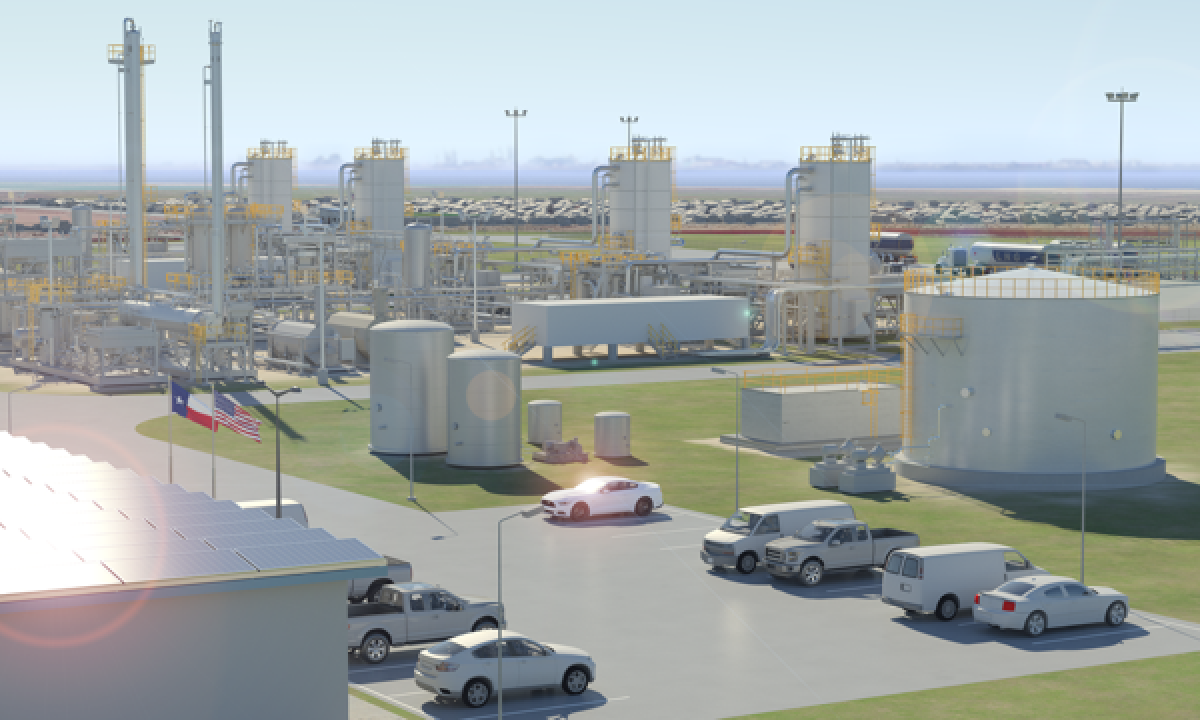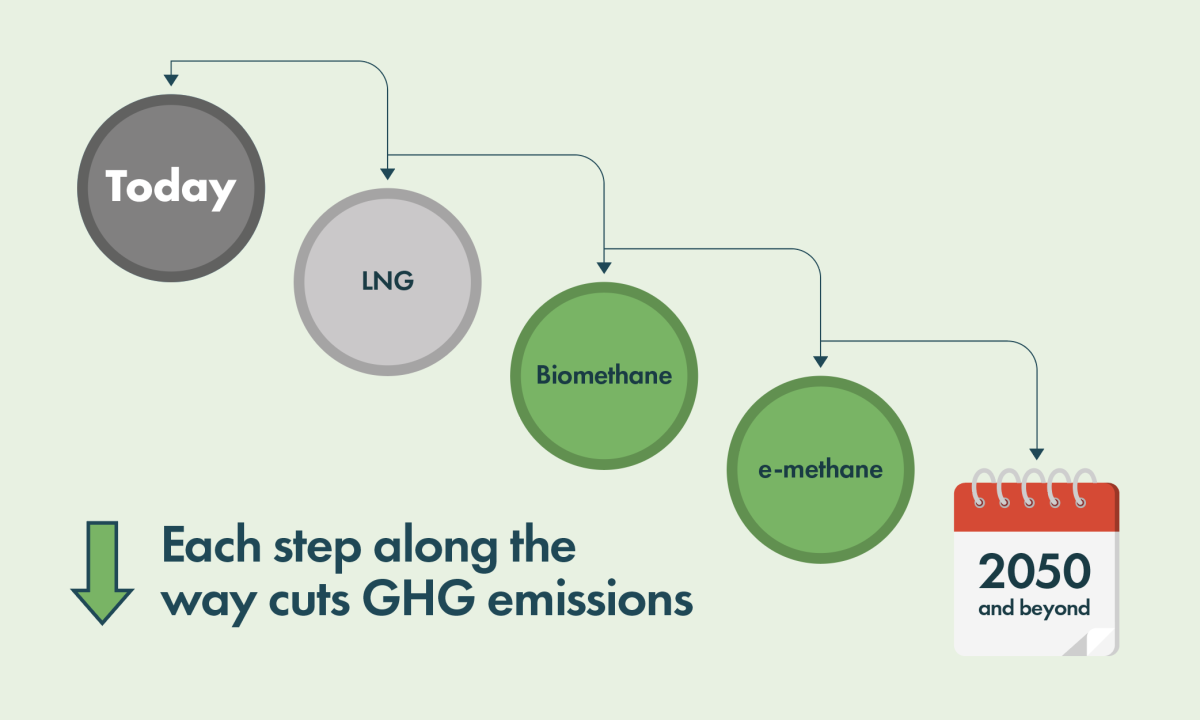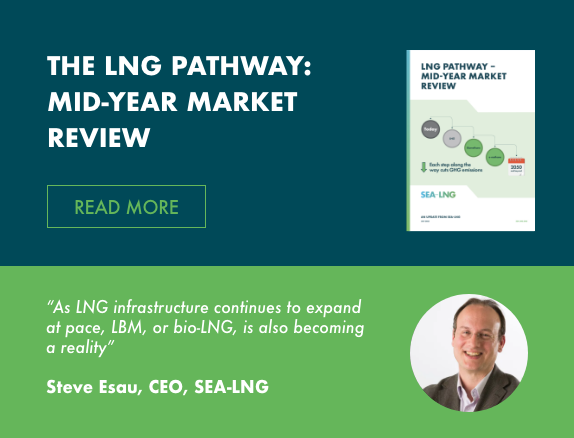3rd December 2021
LET’S CALL IT RENEWABLE SYNTHETIC LNG

SEA-LNG exists to support the ongoing development of the LNG decarbonisation pathway and is dedicated to helping shipping thrive through the energy transition. The end goal of this pathway, to deliver net-zero greenhouse gas (GHG) emissions, requires the production of synthetic LNG from renewable electricity.
Renewable synthetic LNG, chemically identical to fossil LNG, but carbon-neutral, has made big advances in recent months – the ElbBlue, for example, became the first ever ocean-going vessel to be bunkered with synthetic LNG produced from renewable electricity, when it docked in Brunsbüttel, Germany, in late September. The drop-in versatility of renewable synthetic LNG and its biogenic relation, bioLNG, vindicates the continued pursuit of their commercialisation, as the order book for LNG powered ships expands.
The pathway faces challenges: loud calls for a winner takes all approach to fuel choice, when many of the fuels being championed are still at the starting gate; unthinking warnings of stranded assets, when investments made in LNG today can utilise its bio and synthetic cousins; misleading statements about methane slip, when developments by engine manufacturers are underway to eliminate it within the next few years; and confusion about the environmental performance, readiness, costs and availability of other alternative marine fuels.
The LNG pathway makes sense – from an emissions perspective and both commercially and operationally. However, anyone reading about the LNG pathway could easily be confused by the variety of terms used to describe the carbon-neutral forms of the fuel. In recent months, ‘renewable synthetic LNG’ has been referred to variously as carbon-based liquid methane, e-methane, eLNG, Synthetic Natural Gas, SNG, electro-methane, green methane, liquid green methane, liquefied synthetic methane (LSM), and hydrogen-based LNG. Among SEA-LNG members, naming of the product is not always consistent.
SEA-LNG is committed to ensuring all our communications use the term renewable synthetic LNG. We’ve taken this step because we feel the term is clear and self-explanatory:
Renewable – It is produced from renewable electricity, for example solar and wind, and carbon from sustainable biomass or captured directly from the air around us.
Synthetic – It is manufactured through established technological processes and is not based on fossil-fuels nor derived directly from biomass.
LNG – It is chemically identical to the fuel used in shipping for more than 50 years. Implicit in this is that it can be burned in existing LNG-fuelled ships and utilise the existing network of supply infrastructure.
Though it is understandable that as our sector develops technologies for the LNG pathway, we may on occasion use different terms to describe the fuel, ultimately, we are talking about the same thing. We should aim to be consistent.
This month, SEA-LNG publishes a new animation explaining the LNG pathway, and the major role that renewable synthetic LNG has to play as the ultimate destination of that pathway. SEA-LNG and its members would like the video to be an introduction and a crib for anyone interested in alternative marine fuels, whether they are in our industry, provide services to our industry, or, like the vast majority of individuals and organisations, simply want to see action taken to address climate change now.
To view the new video on SEA-LNG’s YouTube channel, click here.
We would very much appreciate it if you could like and share this resource through your personal social media channels and networks.



